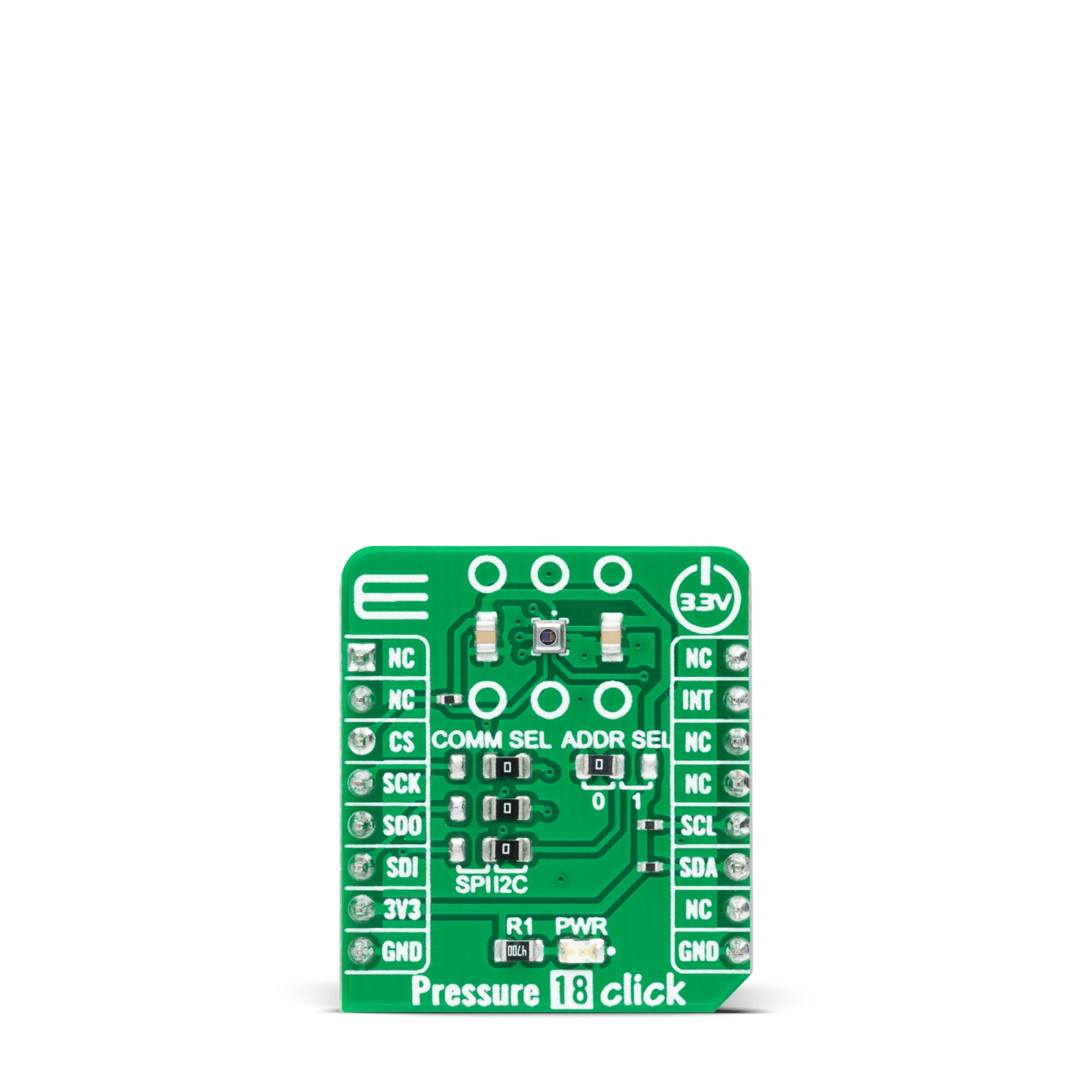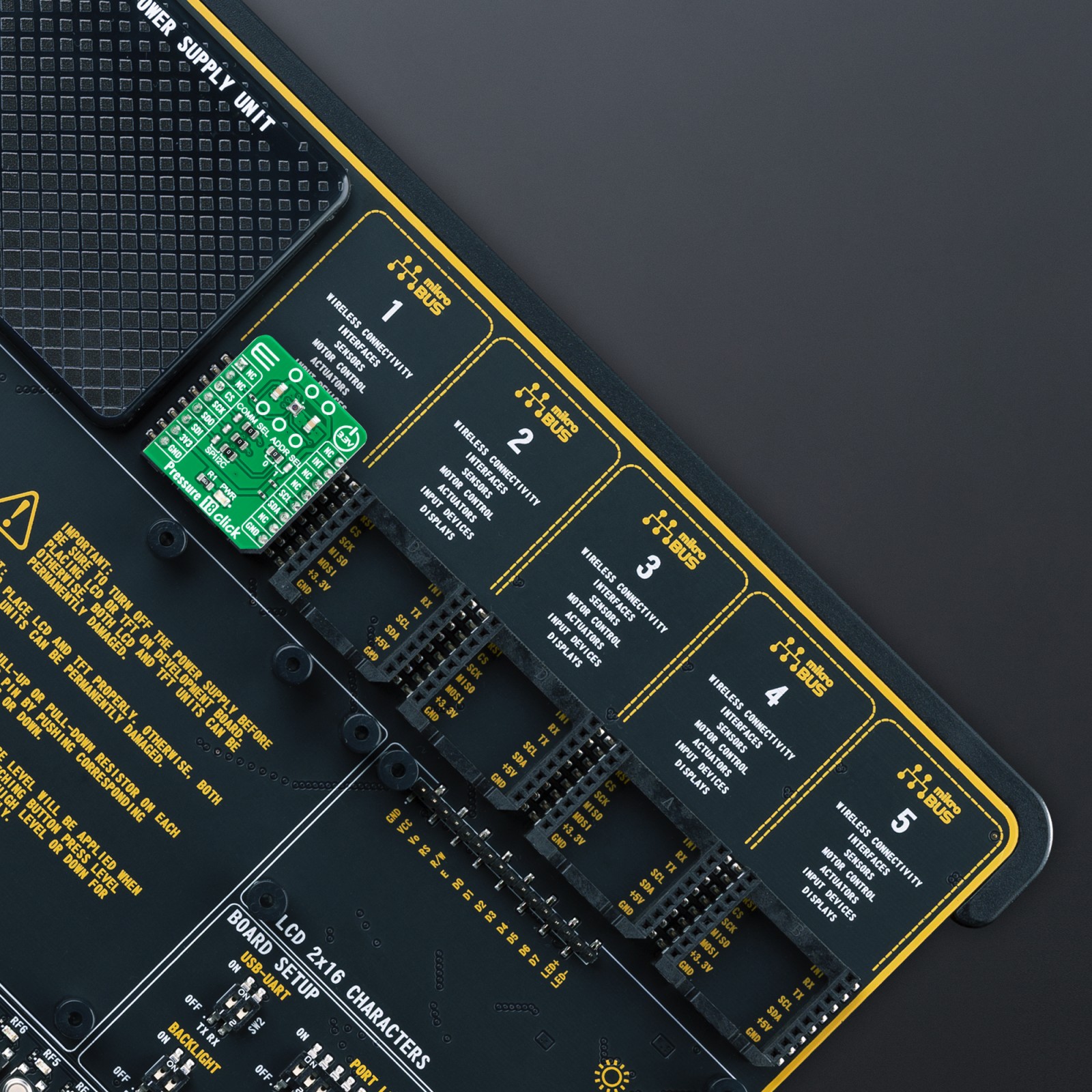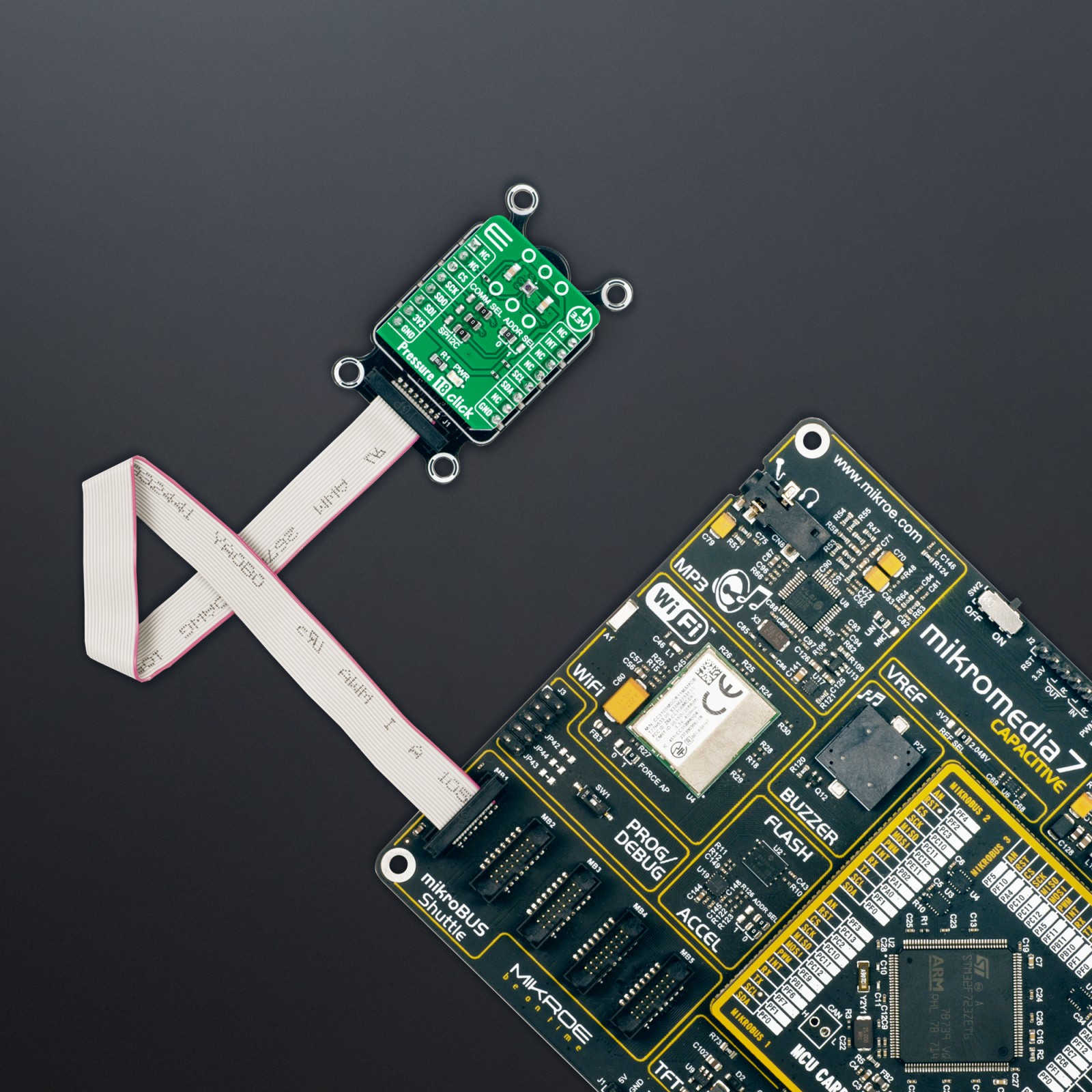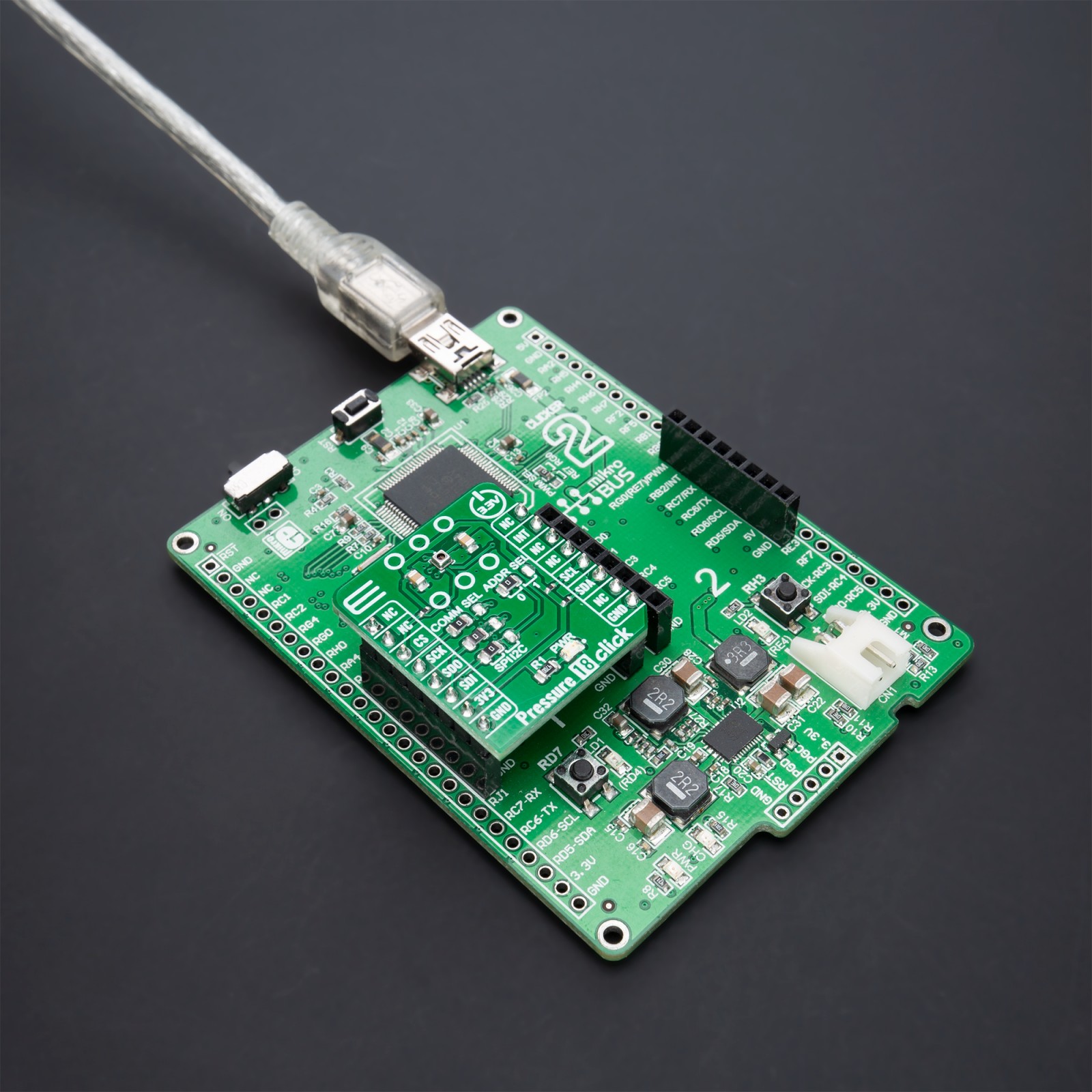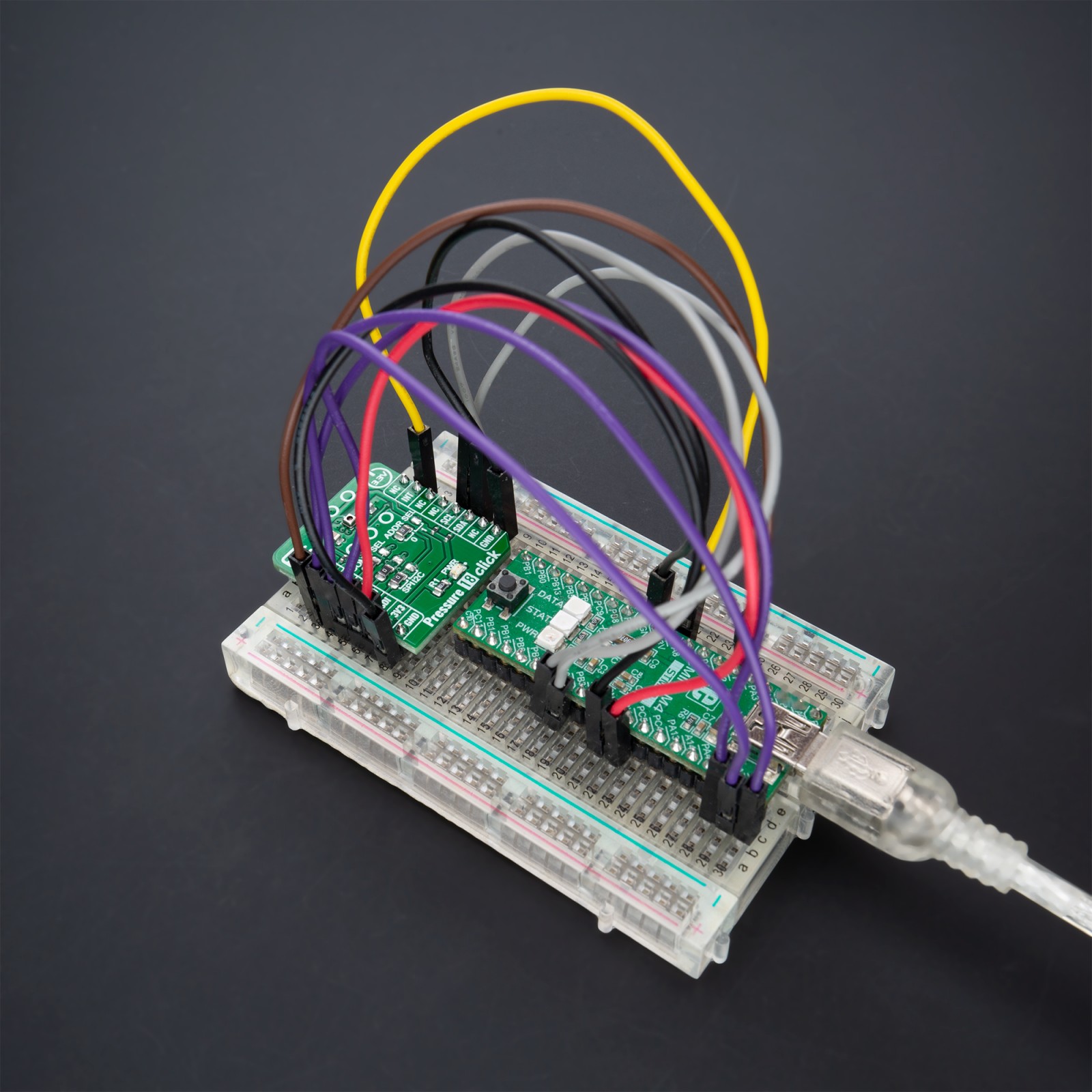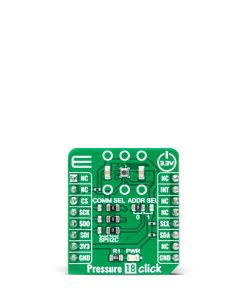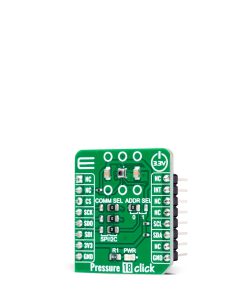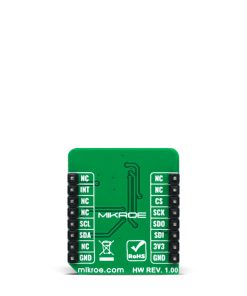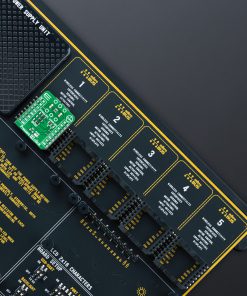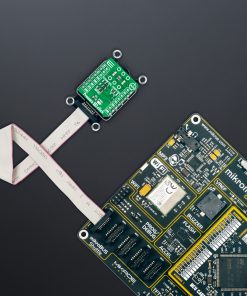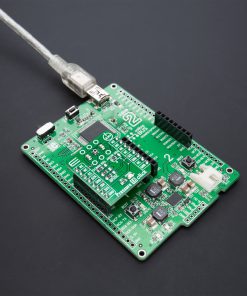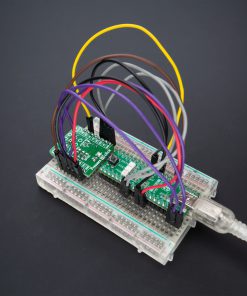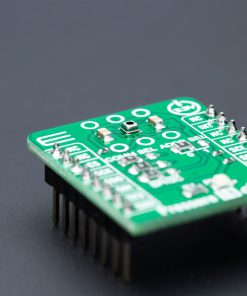Pressure 18 Click
R370.00 ex. VAT
Pressure 18 Click is a compact add-on board that contains a board-mount pressure sensor. This board features the BMP384, a robust barometric pressure sensor delivering market-leading accuracy in a compact package from Bosch Sensortec. The BMP384 provides a relative accuracy of ±9Pa and typical absolute accuracy of ±50Pa with ultra-low noise, low power consumption, and a temperature coefficient offset of ±1Pa/K. It converts output data into a 24-bit digital value and sends the information via a configurable host interface that supports SPI and I2C serial communications. It measures pressure from 300hPa to 1250hPa over a wide operating temperature range. This Click board™ is suited for various pressure-based applications, altitude tracking, industrial, consumer, weather stations, and more.
Pressure 18 Click is supported by a mikroSDK compliant library, which includes functions that simplify software development. This Click board™ comes as a fully tested product, ready to be used on a system equipped with the mikroBUS™ socket.
Stock: Lead-time applicable.
| 5+ | R351.50 |
| 10+ | R333.00 |
| 15+ | R314.50 |
| 20+ | R302.66 |

